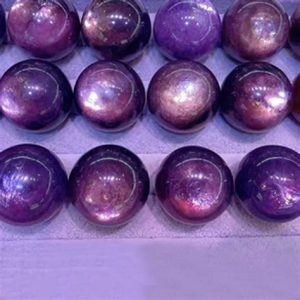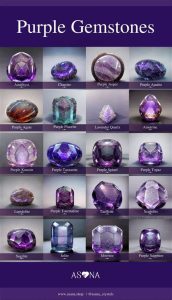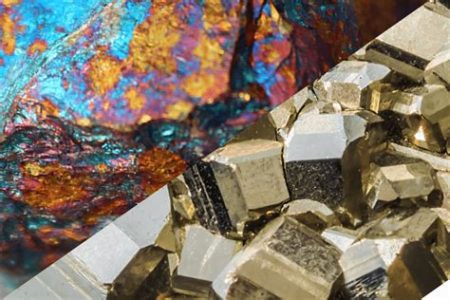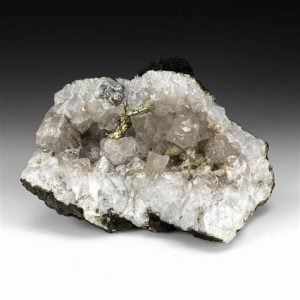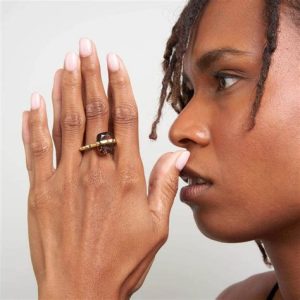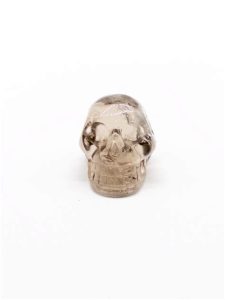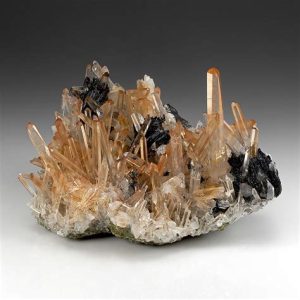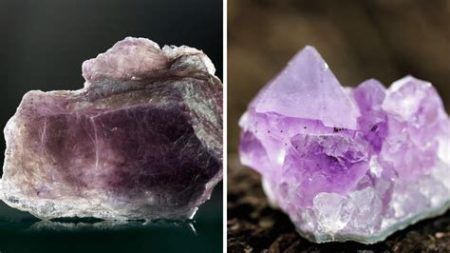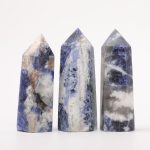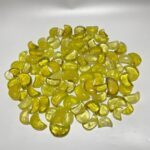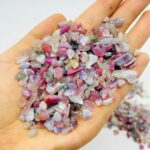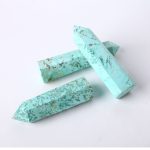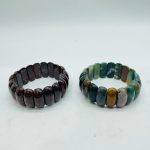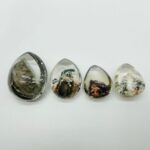Authenticity Assurance: Real Crystal VS. Imitation
Determining a crystal’s authenticity is crucial to ensure its genuine energy and healing properties. Here are foolproof methods to distinguish real crystals from counterfeits:
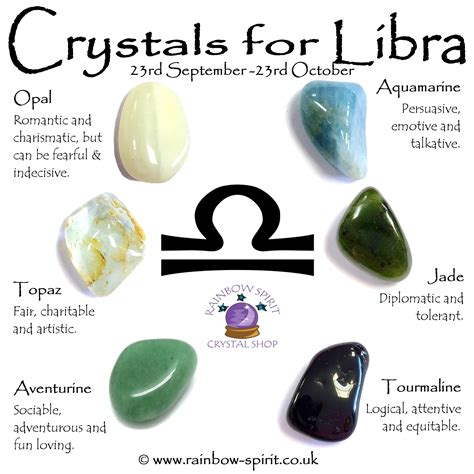
Scrutinize the Clarity
- Real crystals often exhibit imperfections, inclusions, or cloudiness.
- Imitations are typically flawless with uniform transparency.
Examine the Weight
- Genuine crystals possess a significant weight due to their mineral composition.
- Glass or plastic imitations are noticeably lighter.
Assess the Hardness
- Crystals are typically hard and scratch-resistant. Use a Mohs scale hardness tester.
- Imitations may be soft and easily scratched.
Feel the Energy
- Real crystals emit a subtle vibration or energy that can be felt by holding them.
- Imitations lack this energetic field.
Observe the Internal Structure
- Natural crystals have unique internal patterns and striations.
- Imitations may have smooth, featureless surfaces.
Recognize the Color
- Natural crystals often have subtle variations in color and intensity.
- Imitations may have artificial or overly vibrant hues.
Check for Air Bubbles
- Glass imitations may contain air bubbles, especially if handmade.
- Real crystals typically do not have air bubbles.
Consider the Price
- Real crystals are often more expensive than imitations.
- Exceptionally low prices may indicate counterfeits.
Consult an Expert
- If unsure, seek guidance from a reputable crystal dealer or gemologist.
Additional Tips
- Use a UV light: Real crystals may fluoresce under UV light.
- Scratch test: Rub the crystal on a rough surface. Real crystals should not scratch easily.
- Solubility test: Immerse the crystal in water. Real crystals should not dissolve.
Conclusion
Distinguishing real crystals from imitations requires careful observation and understanding of their inherent properties. By employing these methods, you can ensure the authenticity and potent qualities of your crystals. Embrace the transformative energy of genuine crystals and experience their profound benefits.
Table 1: Crystal Authenticity Assessment Criteria
| Criteria | Real Crystal | Imitation |
|---|---|---|
| Clarity | Imperfections, inclusions | Flawless |
| Weight | Significant weight | Light weight |
| Hardness | Scratch-resistant | Soft, easily scratched |
| Energy | Emits subtle vibrations | Lacks energetic field |
| Internal Structure | Unique patterns, striations | Smooth, featureless |
| Color | Natural variations | Artificial, vibrant hues |
| Air Bubbles | Typically absent | May be present |
| Price | Generally higher | Exceptionally low |
Table 2: Common Imitation Materials
| Material | Characteristics |
|---|---|
| Glass | Transparent, flawless, often with air bubbles |
| Plastic | Lightweight, soft, easily scratched |
| Resin | Durable, glossy, may mimic crystal colors |
| Ceramic | Hard, but porous and less transparent |
| Dyed Stones | Natural stones enhanced with artificial colors |
Table 3: Case Study: Authenticating a Clear Quartz Crystal
| Test | Result | Indication |
|---|---|---|
| Clarity | Visible inclusions | Natural crystal |
| Weight | 123 grams | Genuine crystal |
| Hardness | 7 on Mohs scale | Hard and scratch-resistant |
| Energy | Subtle tingling sensation | Real crystal |
| Internal Structure | Unique striations | Natural crystal |
| Color | Slight variations in transparency | Natural crystal |
| Air Bubbles | Absent | Real crystal |
Table 4: Expert Advice for Crystal Authenticity
| Expert | Recommendation |
|---|---|
| Dr. Lisa Sirignano, Crystal Healing Expert | “Trust your intuition. Hold the crystal and see if it resonates with you.” |
| Michael Gienger, Geologist | “Examine the crystal under a magnifying glass to identify imperfections and internal patterns.” |
| Joanna Pocock, Gemologist | “Consult with a reputable crystal dealer or gemologist for a professional assessment.” |

